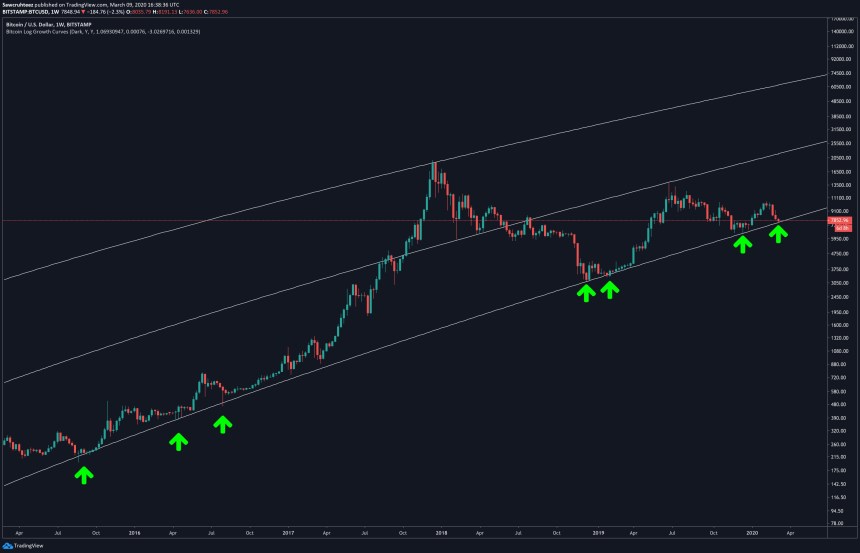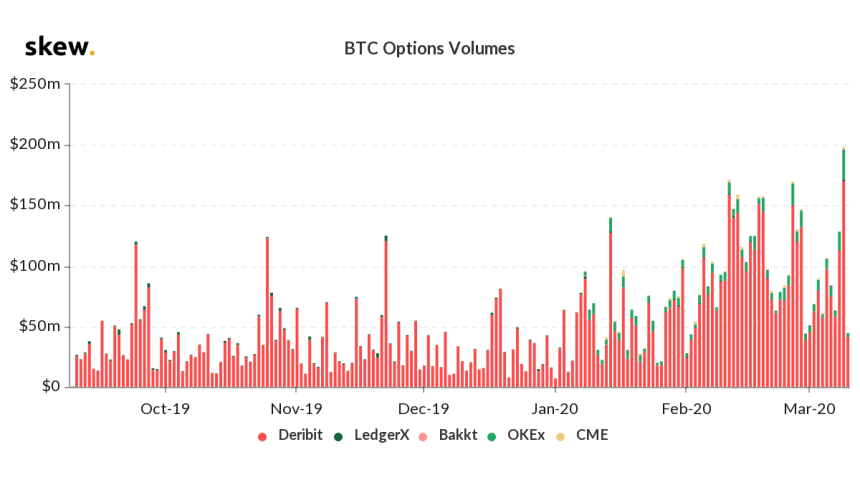Reason to trust

How Our News is Made
Strict editorial policy that focuses on accuracy, relevance, and impartiality
Ad discliamer
Morbi pretium leo et nisl aliquam mollis. Quisque arcu lorem, ultricies quis pellentesque nec, ullamcorper eu odio.
Bitcoin bounced after Sunday’s steep declines, which had seen the cryptocurrency logging its worst daily performance since September 2019.
The bitcoin-to-dollar exchange rate on Tuesday jumped 2.21 percent to establish a new intraday high at circa $8,094. The pair’s rebound, which appeared almost like a “dead cat bounce,” raised hopes for extended bull trend, with prominent derivative trader Tyler D Coates citing a historical support trendline for helping bitcoin turnaround.
“Bitcoin is testing the adoption curve trendline for the seventh time since 2013,” tweeted Coates with a chart illustrating the downside rejection.

Stock-to-Flow Support
The so-called demand area is a part of PlanB’s popular Stock-to-Flow model, a price prediction tool that imagines the bitcoin price at $100,000 in the near future. The analyst had also rejected bitcoin’s 9 percent crash as an irrelevant event, stating that it is still on track to hit a six-figure valuation.
#bitcoin S2F chart adjusted for today's "crash" … nothing really happened, btc still spot on S2F track pic.twitter.com/7bIaZpWgLB
— PlanB (@100trillionUSD) March 8, 2020
An uptrend is also visible in the bitcoin’s options market. As its spot price rebounded, the cryptocurrency’s options contracts across multiple exchanges also hit record volumes, with nearly $200 million worth of bets placed. The rise in options trading activity near what Mr. Coates termed as “adoption curve trendline” also served as a bullish case for bitcoin.

Cash Outpaces Safe-havens
The upside predictions kept coming even though traders remained wary about the condition of the cryptocurrency market. The negative sentiments came amidst the growing number of Coronavirus cases in the world which earlier led the global stock market to register their worst declines since the 2008 financial crisis.
Experts noted that it is difficult to gauge the extent to which the virus could hurt the global financial market. Such uncertainty is prompting investors to dump their risk-on assets for lower-risk safe-havens. Prominent portfolio manager Altaf Kassam, for instance, told WSJ than his fund sold stocks and moved into cash as a measure of protection against market volatility.
Global stock markets tumbled and government bonds rallied as the coronavirus stoked fears of a prolonged economic slowdown https://t.co/d4fWNCG3MZ pic.twitter.com/aW2QS2qcEo
— Reuters Business (@ReutersBiz) March 6, 2020
Interestingly, investors are not keen to treat bitcoin as a safe-haven, an offbeat asset that is more volatile on a normal day than stock markets are on a difficult day. Instead, they are using the cryptocurrency’s overall yearly gains to cover margin calls amid plummeting equities and energy markets.
That leaves bitcoin in a catch-22 situation as the Coronavirus epidemic digs further into the investors’ consciousness. They would like to make distance from a volatile asset in times of global uncertainty. Instead, their go-to choice would be long-term government bonds.
The next big price rally for bitcoin could come when government bonds start yielding negative returns.
















